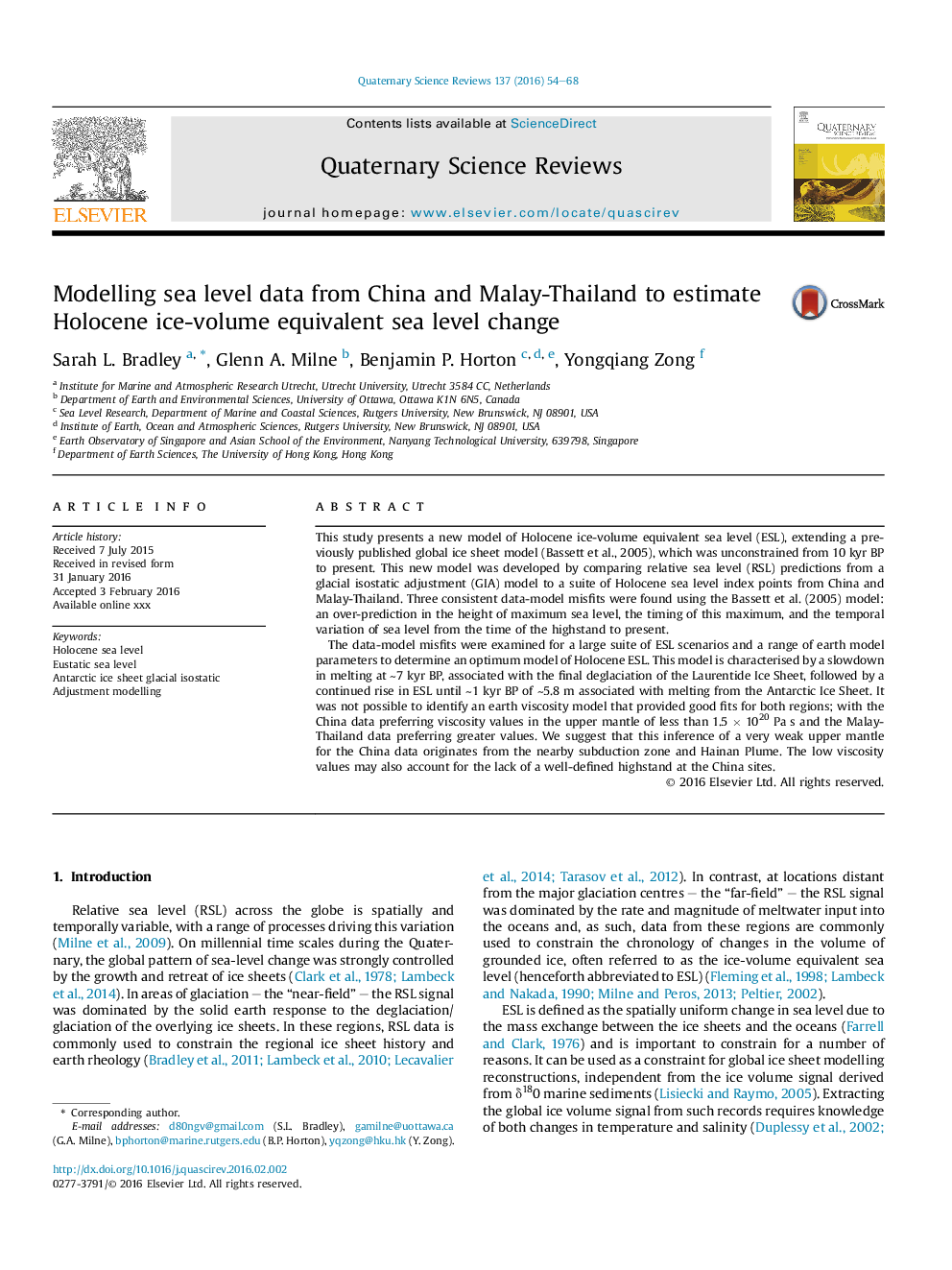| Article ID | Journal | Published Year | Pages | File Type |
|---|---|---|---|---|
| 6446506 | Quaternary Science Reviews | 2016 | 15 Pages |
Abstract
The data-model misfits were examined for a large suite of ESL scenarios and a range of earth model parameters to determine an optimum model of Holocene ESL. This model is characterised by a slowdown in melting at â¼7 kyr BP, associated with the final deglaciation of the Laurentide Ice Sheet, followed by a continued rise in ESL until â¼1 kyr BP of â¼5.8 m associated with melting from the Antarctic Ice Sheet. It was not possible to identify an earth viscosity model that provided good fits for both regions; with the China data preferring viscosity values in the upper mantle of less than 1.5 Ã 1020 Pa s and the Malay-Thailand data preferring greater values. We suggest that this inference of a very weak upper mantle for the China data originates from the nearby subduction zone and Hainan Plume. The low viscosity values may also account for the lack of a well-defined highstand at the China sites.
Keywords
Related Topics
Physical Sciences and Engineering
Earth and Planetary Sciences
Geology
Authors
Sarah L. Bradley, Glenn A. Milne, Benjamin P. Horton, Yongqiang Zong,
